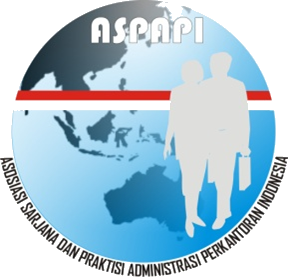Online Learning in disadvantaged areas. A Literature review
(1) Direktorat Guru Pendidikan Menengah dan Pendidikan Khusus Kementerian Pendidikan, Kebudayaan, Riset, dan Teknologi, Indonesia
(*) Corresponding Author
DOI: https://doi.org/10.26858/jo.v8i1.35601
Abstract
The use of technology in the era of the 4.0 technology revolution is inevitable. Even in remote areas, it is not spared in utilizing learning using technology. However, there are network constraints that limit educators and students in the learning process to form online communication. The solution expected for online learning is that the teacher prepares all forms of learning media that are ready to be studied by students, whenever and wherever they are. So that when there is an internet network students are able to learn the learning media delivered by the teacher.
Keywords
Full Text:
PDFReferences
Aljaber, A. (2018). E-learning policy in Saudi Arabia: Challenges and successes. Research in Comparative and International Education, 13(1), 176–194.
Bierly, P. E., Kessler, E. H., & Christensen, E. W. (2000). Organizational learning, knowledge and wisdom. Journal of Organizational Change Management.
Chong, M. C., Francis, K., Cooper, S., Abdullah, K. L., Hmwe, N. T. T., & Sohod, S. (2016). Access to, interest in and attitude toward e-learning for continuous education among Malaysian nurses. Nurse Education Today, 36, 370–374. https://doi.org/https://doi.org/10.1016/j.nedt.2015.09.011
Dev, N. K., Shankar, R., & Qaiser, F. H. (2020). Industry 4.0 and circular economy: Operational excellence for sustainable reverse supply chain performance. Resources, Conservation and Recycling, 153, 104583. https://doi.org/https://doi.org/10.1016/j.resconrec.2019.104583
Domine, V. (2011). Building 21st-Century Teachers: An Intentional Pedagogy of Media Literacy Education. Action in Teacher Education. https://doi.org/10.1080/01626620.2011.569457
Farhan, W., Razmak, J., Demers, S., & Laflamme, S. (2019). E-learning systems versus instructional communication tools: Developing and testing a new e-learning user interface from the perspectives of teachers and students. Technology in Society, 59, 101192. https://doi.org/https://doi.org/10.1016/j.techsoc.2019.101192
Ferdig, R. E. (2006). Assessing technologies for teaching and learning: understanding the importance of technological pedagogical content knowledge. British Journal of Educational Technology, 37(5), 749–760. https://doi.org/10.1111/j.1467-8535.2006.00559.x
Galea, V., & Stewart, T. (2007). Challenge FRAP : An e-learning tool used to scaffold authentic problem-solving processes. 309–320.
Harasim, L. (2017). Learning theory and online technologies. Taylor & Francis.
Hobbs, R., & Tuzel, S. (2017). Teacher motivations for digital and media literacy: An examination of Turkish educators. British Journal of Educational Technology. https://doi.org/10.1111/bjet.12326
Jabbar, A., Gasser, R. B., & Lodge, J. (2016). Can New Digital Technologies Support Parasitology Teaching and Learning? Trends in Parasitology, 32(7), 522–530. https://doi.org/https://doi.org/10.1016/j.pt.2016.04.004
Jayawardena, P. R., van Kraayenoord, C. E., & Carroll, A. (2019). Science teachers’ practices: Teaching for self-regulated learning in relation to Pintrich and Zusho’s (2007) model. International Journal of Educational Research, 94, 100–112. https://doi.org/https://doi.org/10.1016/j.ijer.2018.09.022
Konting, M. M. (2012). Leadership Development for Sustainability of E-Learning. Procedia - Social and Behavioral Sciences, 67, 312–321. https://doi.org/https://doi.org/10.1016/j.sbspro.2012.11.334
Kumar, S., & Toteja, R. (2012). Print to Digital: A Study of Students’ Psychosomatic Cost in Traditional and E-Learning. Procedia - Social and Behavioral Sciences, 67, 553–560. https://doi.org/https://doi.org/10.1016/j.sbspro.2012.11.360
Lau, K. H., Lam, T., Kam, B. H., Nkhoma, M., Richardson, J., & Thomas, S. (2018). The role of textbook learning resources in e-learning: A taxonomic study. Computers and Education, 118, 10–24. https://doi.org/10.1016/j.compedu.2017.11.005
Lin, M.-H., Chen, H., & Liu, K. S. (2017). A study of the effects of digital learning on learning motivation and learning outcome. Eurasia Journal of Mathematics, Science and Technology Education, 13(7), 3553–3564.
McKnight, K., O’Malley, K., Ruzic, R., Horsley, M., Franey, J. J., & Bassett, K. (2016). Teaching in a digital age: How educators use technology to improve student learning. Journal of Research on Technology in Education. https://doi.org/10.1080/15391523.2016.1175856
Muangmee, C., Kot, S., Meekaewkunchorn, N., & Kassakorn, N. (2021). Students ’ use behavior towards e-learning tools during COVID- 19 pandemics : Case study of higher educational institutions of. 10(4), 1166–1175. https://doi.org/10.11591/ijere.v10i4.21821
Mubarak, M. F., & Petraite, M. (2020). Industry 4.0 technologies, digital trust and technological orientation: What matters in open innovation? Technological Forecasting and Social Change, 161, 120332. https://doi.org/https://doi.org/10.1016/j.techfore.2020.120332
Nakajima, T. M., & Goode, J. (2019). Transformative learning for computer science teachers: Examining how educators learn e-textiles in professional development. Teaching and Teacher Education, 85, 148–159. https://doi.org/https://doi.org/10.1016/j.tate.2019.05.004
Neumann, W. P., Winkelhaus, S., Grosse, E. H., & Glock, C. H. (2021). Industry 4.0 and the human factor–A systems framework and analysis methodology for successful development. International Journal of Production Economics, 233, 107992.
Ngabiyanto. (2020). E-Learning Evaluation Using General Extended Technology Acceptance Model Approach at Schools in COVID-19 Pandemic Ngabiyanto*. European Journal of Educational Research, 9(2), 865–875.
Novos, I. E. (1992). Learning by doing, adverse selection and firm structure. Journal of Economic Behavior & Organization, 19(1), 17–39. https://doi.org/https://doi.org/10.1016/0167-2681(92)90068-M
Sua, T. Y., Ngah, K., & Darit, S. M. (2013). Parental choice of schooling, learning processes and inter-ethnic friendship patterns: The case of Malay students in Chinese primary schools in Malaysia. International Journal of Educational Development, 33(4), 325–336. https://doi.org/https://doi.org/10.1016/j.ijedudev.2012.09.002
Sukendro, S., Habibi, A., Khaeruddin, K., Indrayana, B., Syahruddin, S., Makadada, F. A., & Hakim, H. (2020). Using an extended Technology Acceptance Model to understand students’ use of e-learning during Covid-19: Indonesian sport science education context. Heliyon, 6(11), e05410. https://doi.org/https://doi.org/10.1016/j.heliyon.2020.e05410
Tantrarungroj, P., & Suwannatthachote, P. (2012). Enhancing Pre-service Teacher’s Self-efficacy and Technological Pedagogical Content Knowledge in Designing Digital Media with Self-regulated Learning Instructional Support in Online Project-based Learning. Creative Education, 03(08), 77–81. https://doi.org/10.4236/ce.2012.38b017
Wihlborg, M., Friberg, E. E., Rose, K. M., & Eastham, L. (2018). Facilitating learning through an international virtual collaborative practice: A case study. Nurse Education Today, 61, 3–8. https://doi.org/https://doi.org/10.1016/j.nedt.2017.10.007
Article Metrics
Abstract view : 263 times | PDF view : 32 timesRefbacks
- There are currently no refbacks.
Copyright (c) 2022 Ahmad Budidarma

This work is licensed under a Creative Commons Attribution 4.0 International License.






























 under a
under a